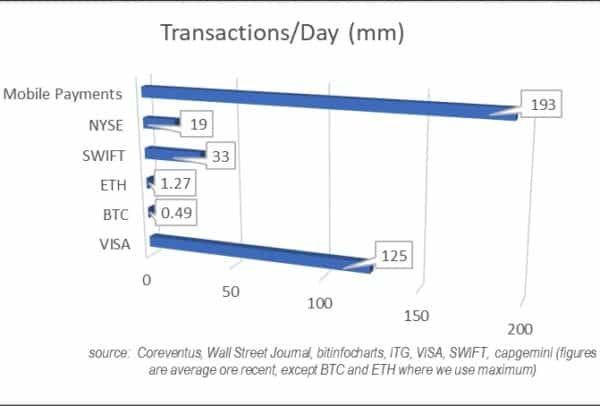Blockchain has to overcome these issues to be a successful global payments platform

 Blockchain transaction volumes are small compared to global payments platforms. However, they are reliable, and have grown rapidly over the past several years.
Blockchain transaction volumes are small compared to global payments platforms. However, they are reliable, and have grown rapidly over the past several years.
Ethereum (ETH) and Bitcoin (BTC) are the two major public blockchains in use. BTC is primarily associated with cryptocurrency transactions. Ethereum is also a distributed application environment, where transactions utilize smart contracts to execute instructions during a transaction.
There are the two major takeaways from the chart above:
Blockchain Is Small, But Still Meaningful
Compared to major global e-payments processing platforms, these remain small. They have, however, grown from zero to these levels in under a decade, and that growth happened without much institutional support. Regardless of what anyone thinks of the applicability of cryptocurrency or distributed applications, this is a very significant technical achievement.
Can Blockchain Get Larger?
There are factors that could limit growth -Bitcoin’s two-day transaction confirmation times for example, but there are solutions to problems of scalability. Bitcoin Cash (BCH), a popular alternate form of Bitcoin with the fourth largest market cap of any cryptocurrency, has a development roadmap to a 1 terabyte block size, up from Bitcoin’s 1 megabyte size, or BCH’s current 8 megabyte size.
Speeding up transaction times, resolving regulatory issues and gaining further business/consumer adoption are critical for success. While we believe the industry can mature and meet these challenges, these are significant hills to climb.


Byron Berry
Writer
